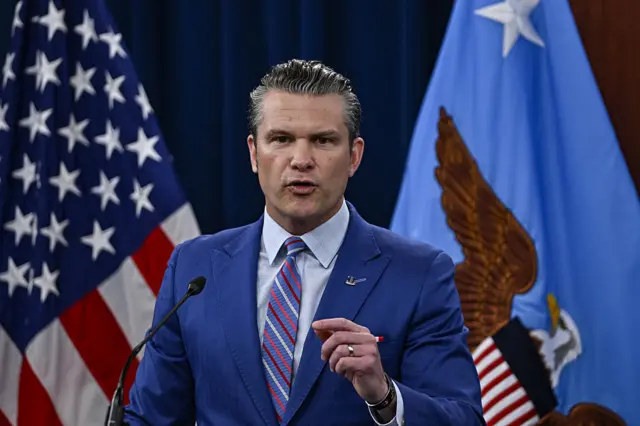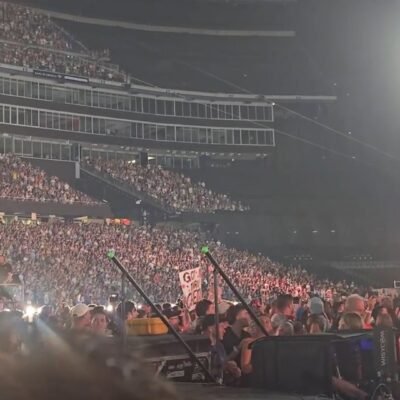In a sharp and high-profile press conference earlier this week, U.S. Defense Secretary Pete Hegseth expressed strong support for the recent U.S.-led response strike in Iran, calling it a “strategic success.” He also launched a pointed attack on the press, accusing mainstream media outlets of spreading misinformation and undermining national security interests.
The remarks, which have since sparked a wave of political and public reaction, offered a rare look into the mindset of a top defense official openly challenging not only foreign adversaries but also the role of the media during times of international conflict.
A Bold Statement on the Iranian Strike
From the very start of his speech, Pete Hegseth’s Iranian strike comments made it clear that he believed the operation was not only justified but also highly effective. The strike, which reportedly targeted a weapons depot believed to be supplying terrorist proxies in the region, was described by Hegseth as a “surgical success with minimal collateral damage and maximum impact.”
“This strike was precise, deliberate, and necessary,” said Hegseth. “It eliminated a major threat to our troops and our allies. It sent a clear message that the United States will not sit idly by while hostile actors threaten global stability.”
While Pentagon officials remained cautious in the days following the strike, Hegseth’s confident tone seemed to signal a shift toward a more assertive military policy.
Criticism of the Media: ‘Irresponsible and Dangerous’
What truly set this press event apart was Pete Hegseth’s strong rebuke of the press. He accused several mainstream outlets of misreporting key details about the strike and even suggested that their coverage bordered on “journalistic sabotage.”
“The press should be holding enemies accountable, not our own military,” Hegseth said. “Instead, they rush to judgment, spread incomplete facts, and push narratives that embolden our adversaries.”
He cited examples of headlines that he said mischaracterized the strike as an “escalation,” and others that focused heavily on Iranian casualties without discussing the legitimacy of the target.
According to Hegseth, such reporting “distorts public perception” and “puts American lives at risk by weakening resolve and unity at home.”
The Context: Rising Tensions with Iran
The Iranian strike came amid growing concerns over Iran’s role in funding and arming proxy groups across the Middle East. U.S. intelligence sources had reportedly intercepted communications suggesting that a specific warehouse was being used to ship drones and explosive devices to destabilize neighboring countries.
Although Iran has denied the allegations, the U.S. Department of Defense maintained that there was sufficient evidence to justify the attack.
Hegseth’s comments come at a time when the Biden administration has faced criticism from both sides of the political aisle—some urging more restraint, others demanding tougher military responses.
Inside the Operation
Though details remain classified, officials familiar with the operation said the strike was executed using precision-guided missiles launched from a naval platform in the Persian Gulf. The attack was timed during the early morning hours to avoid civilian casualties and relied on months of surveillance and intelligence gathering.
Hegseth highlighted the careful planning behind the mission:
“This was not a reckless move. It was a calibrated response. Every effort was made to avoid civilian harm and to ensure strategic success.”
He also praised the intelligence teams, special operations units, and drone surveillance teams who contributed to the operation, calling them “the best of the best.”

Public and Political Reactions
The public response to Pete Hegseth’s Iranian strike comments has been mixed. Supporters have applauded his decisive leadership and willingness to call out media bias, while critics have warned that such rhetoric could create deeper divisions within the country.
Senator Josh Hawley (R-MO) praised Hegseth’s stance, saying, “We need more leaders who speak truth and defend the honor of our military.” On the other hand, Senator Chris Murphy (D-CT) expressed concern that Hegseth’s tone might alienate allies and escalate tensions unnecessarily.
Media Organizations Respond
Several media organizations mentioned by Hegseth in his remarks responded with statements defending their coverage.
A spokesperson for one major outlet stated:
“Our responsibility is to report the facts, ask tough questions, and ensure accountability—especially in matters of war and peace. We stand by our reporting.”
Press advocacy groups also voiced concern over Hegseth’s comments, arguing that attacking the press in such a public and broad manner sets a dangerous precedent for democracy.
Military Morale and National Unity
Another key theme in Pete Hegseth’s Iranian strike comments was the importance of national unity, especially during times of conflict. He emphasized that public support for the military plays a critical role in the success of any operation.
“When the press sows doubt and division, it affects morale. It weakens the trust between the military and the people they serve.”
Hegseth called on Americans to “rally behind the flag” and support troops who risk their lives defending national interests.
A Glimpse into Hegseth’s Leadership Style
Pete Hegseth has long been known as a strong supporter of the military, with prior experience as a Fox News contributor and a veteran of the Iraq and Afghanistan wars. Since being appointed Defense Secretary, he has brought a more outspoken and media-savvy approach to the role.
His supporters see him as a no-nonsense patriot who is not afraid to speak his mind. His critics, however, argue that he is too combative and unwilling to engage in bipartisan dialogue.
Regardless of one’s political leanings, it’s clear that Hegseth’s leadership style marks a significant shift in how military operations and their aftermath are communicated to the public.
The Bigger Picture: Media, War, and Modern Conflict
Hegseth’s press conference has reopened an ongoing debate about the role of media during military operations. Should the press report every detail immediately, or should there be restraint in the name of national security? Where is the line between healthy skepticism and harmful narrative shaping?
His remarks invite us to consider these questions, especially in an era where information spreads faster than ever and public opinion can be swayed by a single headline.
Conclusion: A Turning Point in U.S. Military Discourse?
The strong and unapologetic tone of Pete Hegseth’s Iranian strike comments signals a potential shift in how future military operations will be communicated and defended. By praising the operation’s precision and calling out the media’s role, Hegseth has made it clear that he sees strong leadership—and strong messaging—as essential parts of modern warfare.
Whether you agree with his methods or not, one thing is certain: Pete Hegseth is reshaping the conversation around defense, diplomacy, and media responsibility in the 21st century.
As the global landscape grows more complex, and as the role of media continues to evolve, the impact of Hegseth’s words—and the response to them—will be watched closely by allies, enemies, and citizens a like.
Read Next – Mark Rutte NATO Trump Comment Sparks White House Post






